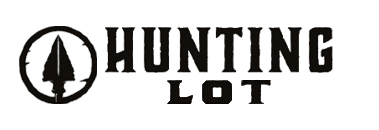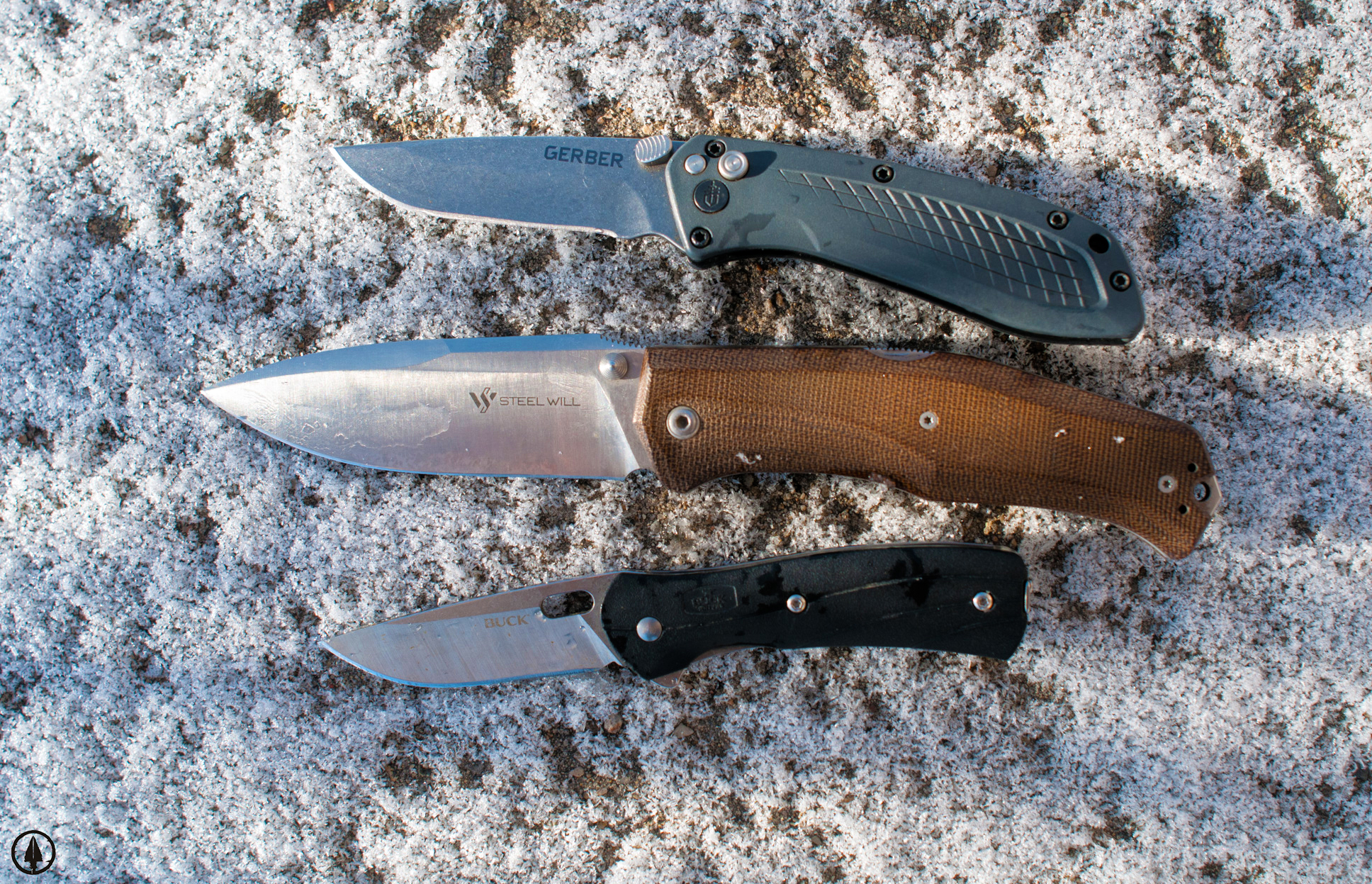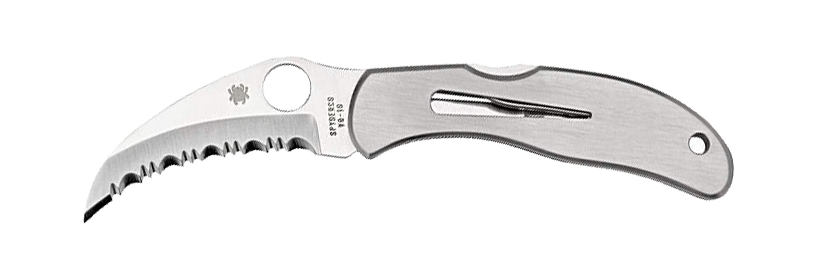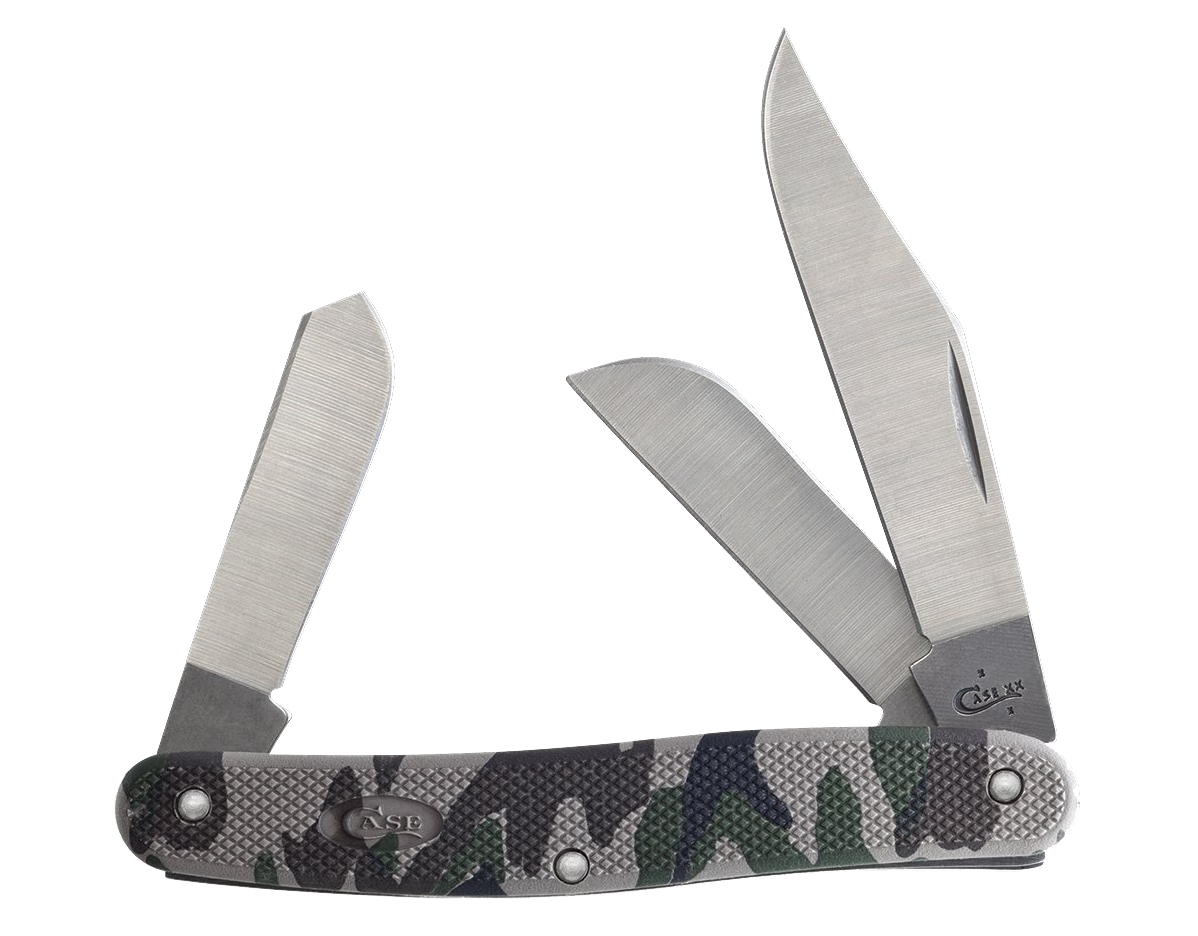When we look at all those hunting knives, it seems that there’s an overwhelming number of different blade shapes, types, and styles available.
But don’t let this worry you.
This guide will cover all the basic blade shapes and designs you should know as a hunter. Anything else is a variation on an existing theme.
Therefore, it’s important to be able to pick the right design for your specific purpose.
Contents
Drop Point
Drop points are one of the most common and familiar blade shapes, especially in the world of hunting knives. Here, the blade’s tip is “dropped” or made lower using a convex curve from the spine.
This means that the knife tip can be ground thicker. This convex shape makes these knives different from the second most popular shape, clip points.
They provide excellent control when carrying out precision-cutting jobs. That’s because the entire back of the knife is not sharpened at all, which prevents the knife from breaking as well.
The point is moderately sharp. It means that it’s not suited for piercing, especially when set side by side to clip point or spear point knives.
Drop Point Knife Advantages
- Used as a tactical and survival knife.
- Excellent for hunting and skinning.
- Large cutting edge.
- Strong and easily controlled point.
Drop Point Knife Disadvantages
- The point is not as sharp as the clip or the spear point.
- Not preferred for piercing.
Example knife: CRKT HVAS Field Strip
Clip Point
The clip point is the second most popular general-purpose blade shape ever fashioned, only behind the drop point. Clip points look like the forward third of the blade has been “clipped” off, thus giving it the name.
More precisely, the knife’s back edge goes straight to about halfway (up to two-thirds) from the point. Then, the blade is clipped in either a straight or a curved shape. This allows the blade to puncture deeper and faster.
It’s perfect for stabbing but is also an excellent shape for a general-purpose knife. Besides, the lighter tip provides better balance and control.
This makes the clip point ideal for piercing and precision cutting. The only downside is that the narrow tip does represent a weak spot on the blade.
Clip Point Knife Advantages
- Used as a tactical and survival knife.
- Excellent for slicing and piercing.
- Good for stabbing and self-defense.
Clip Point Knife Disadvantages
- The point is weak and can lead to breakage.
Example knife: Gerber Gator 06079
Tanto Point
Tanto literally means “short sword”. They were originally used in the Japanese for martial arts. The American company, Cold Steel, changed the design in the ’70s and came up with the modern shape popular today.
Tanto’s top edge is straight or sometimes slightly curved. The belly of the blade is sharply angled. Some say that the blade is technically a trailing point, but the unusual tip is what sets it apart.
Tanto’s biggest advantage is its strength. It can puncture even very hard objects, such as wood.
Tanto Point Knife Advantages
- Used as survival and/or tactical knife.
- Strong blade and an extremely sharp point.
- Can pierce through hard materials.
Tanto Point Knife Disadvantages
- Not preferred for slicing.
- The point can be hard to control.
Example knife: Enlan L01MCT
Spearpoint
Spearpoint blades have a long, convex curved top and bottom edges. That gives them a symmetrical shape where the edges join along the blade’s centerline.
Spear points can be either narrow or wide with a single or double cutting edge.
These blade shapes can pierce and stab with minimal effort. The ultra-sharp point provides exceptional strength and durability. To achieve this level of sharpness, both edges must be sharpened.
This makes them a typical and preferable choice for throwing knives.
Spear Point Knife Advantages
- Used as thrusting and a throwing knife.
- Ultra-sharp point.
- Easily controlled and balanced.
Spear Point Knife Disadvantages
- Not preferred for slicing.
Example knife: CRKT M16-01KZ
Trailing Point
Trailing point blades have an upward curving blade edge. They’re called “trailing point” knives because the tip trails higher than the center axis of the blade’s spine.
Lightweight with a large belly and long cutting edge, they are ideal for slicing and skinning game and fish. The sharp point is good for delicate work like filleting, too.
The main disadvantage is the weak point, which cannot cope with hard materials. Also, their shape makes these knives difficult to sheath.
Trailing Point Knife Advantages
- Used as a hunting knife.
- Excellent for slicing and skinning.
- Usually lightweight.
Trailing Point Knife Disadvantages
- Fragile point.
- Not good for stabbing and piercing.
Example knife: Puma SGB Skinner
Hawkbill
The hawkbill or talon blade is shaped looks just like the name suggests. The cutting edge and spine both curve down in the same direction. This creates a point that angles downward.
The blade shape allows for efficient cutting when pulled back towards the user. Hawkbills are commonly used for cutting carpets or for taming vegetation.
Hawkbill Knife Advantages
- Good for cutting hard objects.
- The blade is usually robust.
Hawkbill Knife Disadvantages
- The point is hard to reach.
- Not used for a piercing or stabbing.
Example knife: Spyderco Harpy
Straight Back
The straight back (a.k.a plain blade or normal blade) has a long, straight spine. The sharpened edge curves upward, meeting it at the tip.
These blades are heavy and are best for chopping or slicing. Probably one of the earliest blade shapes, they’re excellent all-purpose blades.
One of the features that the straight back knives are used for is the dull back edge. Because the back is not sharp, you can press it with your fingers to add extra force or pressure, mainly for cutting.
Probably a must-have knife for every hunter.
Straight Back Knife Advantages
- Used as a regular all-purpose, survival, and/or hunting knife.
- Very good for chopping and slicing.
- Large cutting edge.
Straight Back Knife Disadvantages
- Heavier than most knives.
Example knife: Buck 124 Frontiersman
Serrated
Modifying the edge of the blade and applying a saw-like appearance refers to serration. Serrated blades can be fully serrated or partially serrated, usually starting near the handle.
Serration is usually found on drop point or clip point knives but can appear anywhere.
Serrated blades are masters of cutting. These blades have a reduced contact area on the edge, which can apply extra pressure to the cut material.
The cutting action involves the knife’s many small and sharp contact points. Keep in mind that the cuts made with the serrated blade are less smooth than the normal edge.
Also, the contact points at the edge are harder to sharpen with a whetstone.
Serrated Knife Advantages
- Any knife can be partially serrated.
- Excellent for cutting materials.
- A serrated edge tends to stay sharper longer than a plain edge.
Serrated Knife Disadvantages
- Cuts are not as smooth as the ones from a normal blade.
- A serrated edge is harder to sharpen.
Example knife: Spyderco Byrd Cara
Sheepsfoot
Sheepsfoot blades are so-called because their shape is similar to half a sheep’s hoof when seen from above. Also, they were originally crafted for the specific job of trimming the hooves of sheep.
These knives don’t pierce well, thus are ideal in scenarios where you need to slice without piercing. This blade shape has a straight cutting edge with a straight back extending nearly to the tip.
The profile is curved and sharply drops to join with the cutting edge. Therefore, the sheepsfoot blade is the opposite of the normal (straight-back) blade.
This creates a large belly portion and possible leverage. The lack of tip means it has reduced piercing ability, but it wins on tip durability. The sheepsfoot is a great blade for those really tough cutting jobs.
Sheepsfoot Knife Advantages
- Used as a camping knife.
- Good for cutting, slicing, and chopping.
- Has a long cutting edge.
- Usually very durable.
Sheepsfoot Knife Disadvantages
- Not good for piercing or stabbing.
- The point is not sharp.
Example knife: Benchmade Proper 319
Wharncliffe
The Wharncliffe blade, like the sheepsfoot, has a straight cutting edge and a straight spine. However, these blade shapes have a more gradual descent towards the tip.
A little better at piercing than the sheepsfoot, the Wharncliffe was originally designed for whittling. As such, it provides a lot of leverage on the blade tip for delicate work.
Not ideal for slicing or filleting.
Wharncliffe Knife Advantages
- Used for camping and skinning.
- Very good for cutting and slicing.
- Very long cutting edge.
Wharncliffe Knife Disadvantages
- Not so good for piercing or stabbing.
- The point is not very sharp.
Example knife: Spyderco C11FPWCBK Delica
Needlepoint
Needlepoint blades (a.k.a dagger) have a similar shape to spearpoints, except they are longer and extremely narrow.
However, the particular shapes have two straight edges that meet along the center axis of the blade. In other words, these are narrow blades with very sharp points.
Like the spear point, the needlepoint has a symmetrical shape, and the edges join together along the centerline.
This creates an ultra-sharp point, making the needlepoint blade specifically designed for piercing.
Needle Point Knife Advantages
- Used as hunting and/or a throwing knife.
- Ultra-sharp point.
- Excellent for stabbing and piercing.
Needle Point Knife Disadvantages
- The point is usually very weak.
- Not used for slicing.
Example knife: Schrade SCHF21
Spey Point
Spey blade knives have much thicker blades than other knives of similar size. The curved end of the blade does not come to a point, so penetration is a problem.
These blade shapes were originally designed for use on farms for neutering stock, hence the name “spey”. Today they’re mainly used by hunters for skinning furry animals.
The blade shape goes a long way to preventing any damage to the pelt, making them ideal for the novice.
Spey Point Knife Advantages
- Used as a hunting knife.
- Very good for skinning.
- Easily controlled.
Spey Point Knife Disadvantages
- Not used for piercing.
- The point is not sharp.
Example knife: Case Camo Stockman
Gut Hook
Basically more of a blade feature as opposed to an actual blade shape. This is a special blade type whereby the spine has a sharpened, semi-circular notch cut into it.
In particular, most gut hook knives are trailing point skinners with the gut hook feature added to the back spine.
Hunters often use the hook for field dressing. It is placed in a small cut in the carcass’s belly and then pulled like a zipper. This action splits the abdomen wide open.
Thus, the gut hook’s main advantage is that it allows the skin to be opened without damaging the flesh beneath.
Gut Hook Knife Advantages
- Used for gutting and field dressing.
- Excellent for skinning and slicing.
- Usually has a large “belly”.
Gut Hook Knife Disadvantages
- Extremely difficult to sharpen.
Example knife: Buck 393 Omni Hunter

Hi, my name is Michael Goodman. As a skilled hunter and a man of the field, I will show you some sophisticated, intelligent, and useful hunting methods and techniques.














